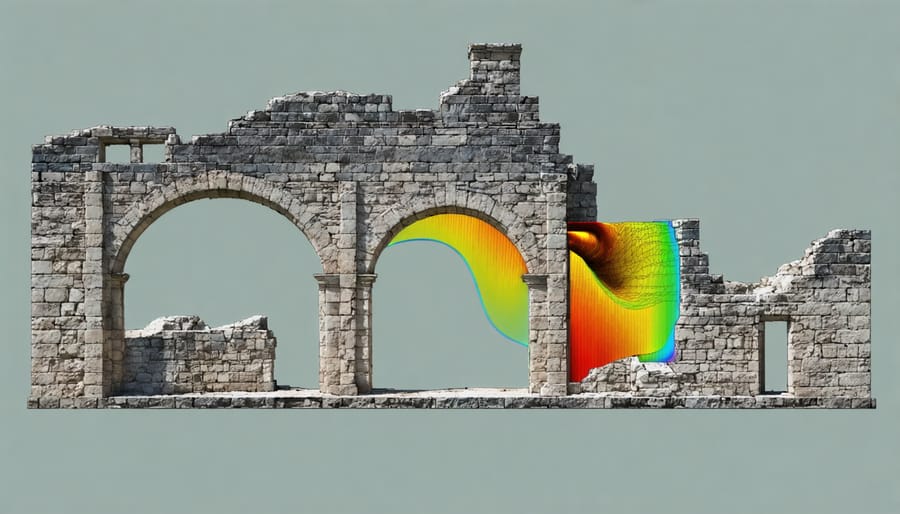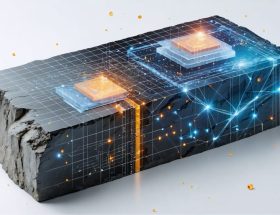Vertical seismic profiling (VSP) revolutionizes how we assess and protect natural stone structures by providing precise subsurface imaging and structural integrity data. This advanced geophysical technique deploys seismic sensors at various depths within a borehole while generating seismic waves at the surface, creating detailed velocity models and structural maps of the surrounding formation. Unlike traditional surface seismic methods, VSP delivers higher-resolution data and more accurate depth measurements, making it invaluable for both construction planning and ongoing structural monitoring.
The technology’s ability to detect potential geological hazards, assess foundation stability, and map subsurface features has transformed how engineers and geologists approach building safety and preservation. By providing real-time data about rock properties, fault lines, and structural weaknesses, VSP enables professionals to make informed decisions about construction methods, reinforcement strategies, and maintenance protocols. This powerful tool bridges the gap between surface observations and deep structural analysis, offering unprecedented insights into the behavior and stability of stone-based architectural elements.
Understanding Vertical Seismic Profiling (VSP)
Basic Principles of VSP
Vertical seismic profiling (VSP) operates on the principle of measuring seismic waves as they travel between the surface and various depths within a borehole. The process begins with a seismic source at the surface, typically a specialized vibrator truck or small explosive charge, which generates controlled seismic waves. These waves travel through the ground and are recorded by receivers called geophones, which are lowered into the borehole at different depths.
The key components of a VSP survey include the seismic source, downhole receivers, and a data acquisition system. The geophones are particularly sensitive instruments that detect both downgoing waves (traveling from the surface) and upgoing waves (reflected from subsurface features). This dual recording capability allows VSP to provide more detailed information than surface seismic surveys alone.
What makes VSP especially valuable is its ability to correlate surface seismic data with actual geological features encountered in the borehole. The technique records both direct and reflected waves, enabling geologists to create high-resolution images of the surrounding rock formations. This data helps identify structural features, lithology changes, and potential zones of interest, making it an invaluable tool for both exploration and monitoring purposes.
VSP Equipment and Setup
The core equipment used in vertical seismic profiling consists of specialized geophones, seismic sources, and data acquisition systems. Geophones are highly sensitive motion detectors that are lowered into boreholes using a wireline cable system. These sensors are typically arranged in arrays of 8 to 48 units, spaced at regular intervals to capture seismic waves at different depths.
Surface seismic sources can include various tools such as vibroseis trucks, air guns, or controlled explosives, depending on the site conditions and survey requirements. For deeper assessments, downhole seismic sources may be employed to generate waves closer to the target area.
The data acquisition system includes modern digital recording equipment that captures and processes the seismic signals. This system typically features high-speed sampling rates, multi-channel capabilities, and precise timing controls. Additional equipment includes depth-measuring devices, orientation sensors, and surface-to-borehole communication systems.
Field setup requires careful coordination between surface and downhole operations. The equipment must be properly calibrated and synchronized to ensure accurate data collection. Modern VSP systems often incorporate real-time monitoring capabilities, allowing technicians to verify data quality during acquisition and make immediate adjustments if needed.
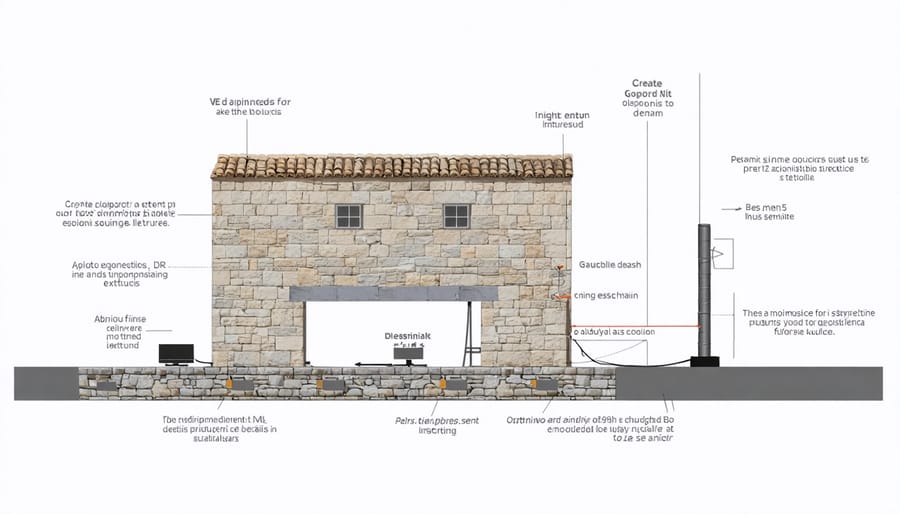
Benefits of VSP for Stone Structures
Structural Integrity Assessment
Vertical seismic profiling (VSP) plays a crucial role in evaluating the structural integrity of stone buildings and monuments. This advanced technology uses seismic waves to create detailed images of stone structures, helping professionals assess stability and identify potential weaknesses before they become serious problems.
By measuring how seismic waves travel through different layers of stone, VSP provides valuable data about the internal condition of structural elements. This information is particularly important for historic buildings and structures that must comply with building codes and safety standards while preserving their architectural heritage.
The assessment process involves placing sensors at various points throughout the structure while controlled seismic waves are generated. These waves reveal critical information about:
• Material density variations
• Hidden cracks or fissures
• Structural discontinuities
• Foundation stability
• Load-bearing capacity
Engineers and architects use this data to create detailed structural integrity maps, helping them make informed decisions about necessary repairs or reinforcements. The non-invasive nature of VSP makes it particularly valuable for assessing delicate historic structures where traditional inspection methods might cause damage.
Real-world applications have shown that early detection through VSP can prevent catastrophic failures and significantly reduce maintenance costs over time. This proactive approach to structural assessment has become increasingly important in areas prone to seismic activity or where aging stone structures require careful monitoring.
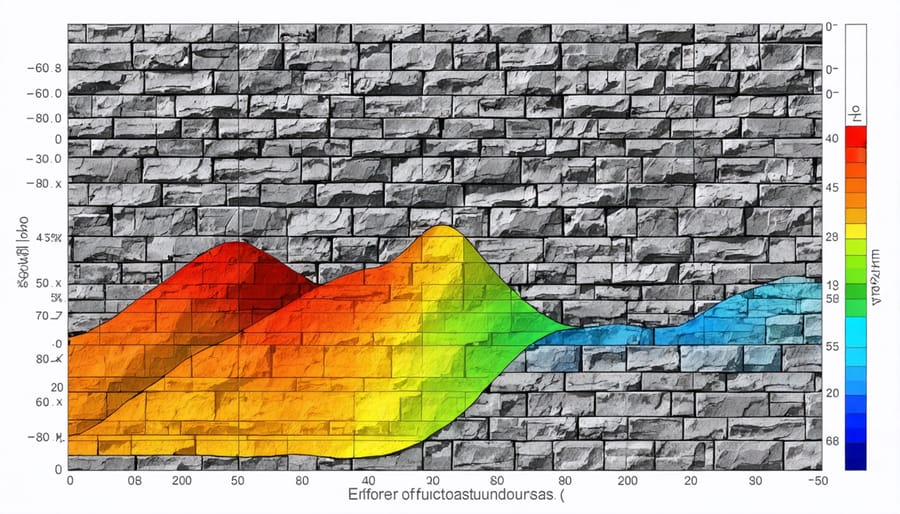
Early Problem Detection
Vertical seismic profiling serves as an early warning system for potential structural issues in stone formations and buildings. By generating detailed subsurface images, VSP technology can identify hidden fractures, voids, and weaknesses before they develop into serious problems. This proactive approach is particularly valuable in areas with significant geological activity or where structural integrity is paramount.
The high-resolution data obtained through VSP allows engineers to detect subtle changes in rock properties, including density variations and stress concentrations. These early indicators often precede visible signs of deterioration, giving property owners and managers crucial time to implement preventive measures. For example, VSP surveys can reveal developing sink holes, unstable foundation conditions, or potential cave-ins well before surface manifestations appear.
In quarrying operations, VSP helps identify potentially problematic zones within stone deposits, ensuring safer and more efficient extraction processes. The technology can detect weak planes, water-filled cavities, and other geological features that might compromise structural stability or product quality.
Moreover, regular VSP monitoring creates a baseline for comparison, making it easier to track changes over time. This temporal analysis enables professionals to distinguish between normal settling patterns and potentially dangerous structural developments, ultimately protecting investments and ensuring safety through early intervention.
Implementing VSP in Stone Buildings
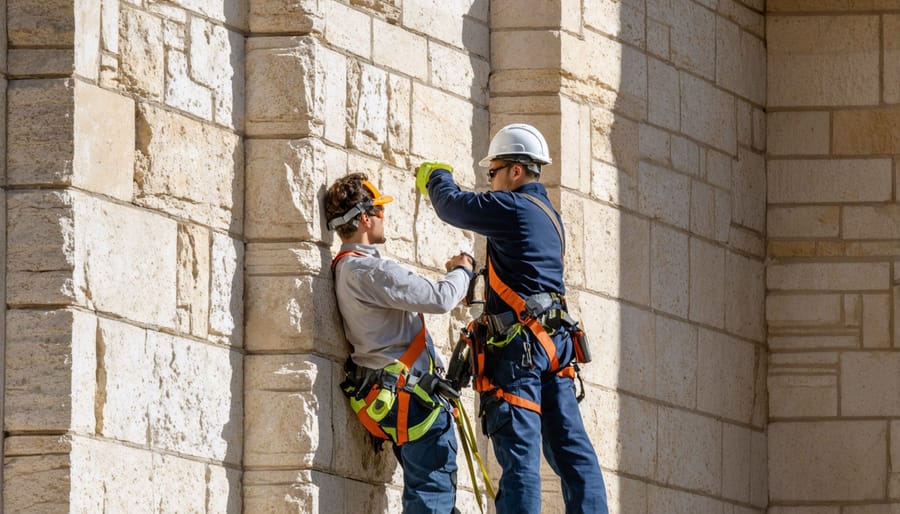
Assessment Process
The vertical seismic profiling assessment process typically follows a systematic approach to ensure accurate data collection and interpretation. The process begins with a thorough foundation assessment to determine optimal sensor placement locations.
First, technicians install a series of geophones at various depths within a borehole, usually spaced at regular intervals of 50 to 100 feet. These sensors are carefully secured to ensure proper coupling with the surrounding rock or soil formation. Simultaneously, surface seismic sources are positioned at predetermined locations around the borehole.
Next, controlled seismic waves are generated at the surface using specialized equipment such as vibroseis trucks or small explosive charges. As these waves travel through the earth, the geophones record both downgoing waves directly from the source and upgoing waves reflected from geological interfaces.
The recorded data is then processed using sophisticated software that converts the raw seismic signals into meaningful geological information. This processing phase includes:
1. Time-depth correlation
2. Wavefield separation
3. Velocity analysis
4. Signal enhancement
The final step involves interpretation of the processed data by experienced geophysicists who create detailed subsurface images and velocity models. These results are used to identify geological structures, assess formation properties, and make informed decisions about resource development or structural integrity.
Throughout the assessment, quality control measures ensure data accuracy and reliability. Multiple recordings are often taken at each depth level to improve signal quality and reduce environmental noise interference.
Data Interpretation
Interpreting VSP data requires careful analysis of the recorded seismic waves and their interactions with subsurface formations. The primary goal is to create detailed velocity models and structural images that reveal the characteristics of rock layers and potential anomalies.
Modern software tools help process VSP data by converting raw seismic traces into meaningful geological information. Key interpretation elements include first-break picking, wavefield separation, and corridor stacking. These processes help identify important features such as fracture zones, voids, and changes in rock density that could affect structural integrity.
During interpretation, geophysicists look for specific patterns in the data, such as time-depth relationships, reflection events, and wave characteristics. These patterns help create accurate subsurface maps and identify potential hazards or areas of concern. The integration of VSP data with other geological information, such as core samples and surface seismic data, provides a comprehensive understanding of the site conditions.
The results typically include detailed velocity profiles, structural cross-sections, and 3D visualization models. These deliverables help architects and engineers make informed decisions about foundation design, excavation planning, and structural reinforcement requirements. Regular monitoring through VSP surveys can also track changes in subsurface conditions over time, allowing for proactive maintenance and risk management strategies.
Case Studies and Real-World Applications
Vertical seismic profiling has proven invaluable in numerous historic preservation and modern construction projects worldwide. One notable example is the structural assessment of Italy’s Leaning Tower of Pisa, where VSP techniques helped engineers understand the tower’s subsurface conditions and foundation stability. The data gathered through VSP surveys contributed significantly to the successful stabilization project completed in 2001.
In the United States, the Golden Gate Bridge underwent comprehensive VSP testing in 2015 to evaluate seismic vulnerabilities and assess the structure’s foundation integrity. The results enabled engineers to develop targeted reinforcement strategies for specific sections of the bridge’s support system, ensuring its continued safety in an earthquake-prone region.
The restoration of Prague’s Charles Bridge, dating back to the 14th century, demonstrates VSP’s effectiveness in historic stone structure preservation. Engineers used VSP to map internal structural weaknesses and identify areas requiring immediate intervention. This non-invasive approach proved crucial in maintaining the bridge’s historical integrity while implementing necessary repairs.
Modern applications include the Burj Khalifa in Dubai, where VSP surveys were conducted during construction to verify foundation stability and monitor structural integrity. The technology continues to play a vital role in the building’s maintenance program, allowing engineers to detect potential issues before they become critical.
In Japan, the Tokyo Skytree project utilized VSP technology to assess soil conditions and structural behavior during construction. The data helped engineers optimize the tower’s design for seismic resistance, particularly important given Japan’s frequent seismic activity.
The renovation of London’s Westminster Abbey incorporated VSP surveys to evaluate the stability of its Gothic architecture. The technology revealed previously unknown structural features and helped conservators develop targeted preservation strategies for the centuries-old stonework.
These case studies demonstrate VSP’s versatility across different geological settings and structural types. The technology’s ability to provide detailed subsurface information while minimizing physical impact has made it an essential tool in both heritage conservation and modern construction projects. Each successful implementation has contributed to our understanding of how VSP can be effectively applied to protect and preserve stone structures for future generations.
Vertical seismic profiling has proven to be an invaluable tool in the field of stone structure preservation, offering comprehensive insights that traditional assessment methods simply cannot match. By providing detailed subsurface imaging and structural analysis, VSP enables preservationists and architects to make informed decisions about restoration and maintenance strategies.
The technology’s ability to detect hidden structural weaknesses, assess material degradation, and monitor changes over time makes it an essential component of modern preservation efforts. Through accurate data collection and analysis, VSP helps professionals develop targeted intervention plans that minimize invasive procedures while maximizing the effectiveness of preservation work.
The benefits of VSP extend beyond immediate structural assessment. Its non-destructive nature ensures that historic and culturally significant structures remain undamaged during evaluation, while the detailed data collected serves as a valuable baseline for future monitoring and maintenance programs. This proactive approach to structural health monitoring has revolutionized how we protect and preserve our architectural heritage.
As technology continues to advance, VSP’s role in preservation will only grow more significant. Its combination of accuracy, reliability, and non-invasive methodology makes it an indispensable tool for ensuring the longevity of stone structures for future generations. The investment in VSP technology ultimately translates to more effective preservation strategies and better-protected architectural treasures.

